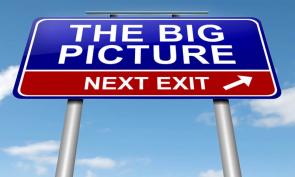
In 1980, the 250 largest law firms in the country averaged only 95 lawyers. By 2001, however, that average had risen to 417.1 and the growth was much greater among the largest of the large firms. Indeed, by 2001, the 20 largest firms in the U.S. averaged 1,220 lawyers, and there were 12 firms in the country with more than 1,000 lawyers.
This extraordinary growth has, not surprisingly, caused many law firms to reorganize their governance and management systems to marshal their resources, market their services, and manage their client relationships more effectively.
It has, in short, encouraged more business-like behavior in organizations that historically often prided themselves on shunning "commercial" practices.
The move toward more centralized governance and management systems has also, however, placed increasing pressure on the concept of "partnership" as the organizing model for large law firms of the future. Indeed, it has led many thoughtful commentators to question whether partnership can ultimately survive as the dominant form of law firm structure.
History
Before tackling this question, it might be useful to look at how we got to the partnership model in the first place. The organization of law firms as partnerships has its roots deep in the history of English law, in the traditional role of the English barrister as the "personal representative" of his client. To assure the effective operation of the adversary system, barristers were required to take oaths to the courts to conduct themselves objectively and in the best interests of their clients, without any conflicts of interest whatsoever. As a consequence, barristers were required to operate as individuals and were not permitted to be in partnership with others. They were personal representatives of their clients, and they were liable to both the courts and their clients for the conduct of their office.
This idea of the lawyer as personal representative was transplanted to the new American republic, along with the English Common Law itself. American law early on rejected the notion that lawyers should be required to practice only as separate individuals. It did, however, embrace the concept that lawyers should have personal relationships with their clients and should remain personally liable to their clients for their actions.
That led inexorably to the requirement that associations for the practice of law could only take the form of partnerships, since only that organizational structure preserved the full personal participation and liability of the lawyers themselves.
In the late 19th and early 20th centuries, as the American bar first began to organize itself on a national basis, the partnership model was effectively incorporated into law in most states (either by statute or in rules of practice) through the adoption of prohibitions against limitations on personal liability for lawyers.
Motivated by a strong desire to enhance the status of lawyers as "professionals," state bars across the country promulgated rules forbidding lawyers from engaging in a wide variety of activities that would be common for other types of business organizations. The current Rule 5.4 of the ABA`s Model Rules of Professional Conduct reflects these prohibitions: forbidding lawyers from sharing legal fees with nonlawyers; prohibiting lawyers from forming partnerships with nonlawyers for the practice of law; and banning lawyers from practicing in any type of association in which a nonlawyer has any ownership interest, is a director or officer, or has any right to direct or control the lawyers` professional judgment.
Basic Organizational Model
The basic organizational model adopted by most law firms in response to these regulatory restrictions was the general partnership. Beginning with the rise of small commercial law firms in New York in the late 19th century and continuing through at least the 1970s, the general partnership was essentially the only form of organization for lawyers engaged in private practice.
Many of the governance and management issues confronting law firms today are attributable directly to the fact that most lawyers still think of the general partnership as the organizing paradigm for law firms.
The traditional attributes of the general partnership model are well-known.
First, the structure is a pass-through mechanism focused on individuals, with full imputation of knowledge from one individual to another. Thus, every partner is presumed to "know" everything that every other partner "knows."
Second, all partners participate, on a proportional basis, in the profits and losses of the partnership. They share both the "up side" potential as well as the "down side" risks.
Third, each partner has the authority to bind all other partners by his or her actions. Thus, each partner shares the liability for mistakes of other partners.
Fourth, each partner has full liability to third parties for the actions of his or her partners. There are no limitations on personal liability.
And fifth, all partners participate, on a proportional basis, in the governance and management of the partnership.
Problems
While the general partnership model worked reasonably well when law firms were relatively small, it has not proved a useful paradigm as firms have grown. The decentralized management style embodied in the model was perhaps tolerable when firms had a single office and a couple of dozen partners. It is far less functional in firms of several hundred partners spread over multiple locations that must respond rapidly to changing market conditions. Other problems with the partnership model are also exacerbated by size:
- The imputation of knowledge principle embedded in the model poses virtually insurmountable problems for large law firms, particularly if considered in the context of "positional" conflicts of interest;
- The imposition of near limitless personal liability on every partner for the acts of every other partner creates serious concern in large firms where it is impossible for any partner to be fully aware of all of the firm`s activities;
- The inability of law firms under the current model to access traditional capital markets has forced many firms to rely increasingly on debt as a means of funding expansion, with the result that debt levels in many large firms are now alarmingly high; and
- The general antipathy and resistance of many lawyers to "commercial" practices has been a serious roadblock in many firms to the development of effective management and client service strategies.
The process began with the Supreme Court`s 1977 decision in Bates v. State Bar of Arizona, which was the first step in breaking down many of the bar`s traditional "guild" rules on advertising and solicitation.
At about the same time, in response to growing concerns over increasingly large malpractice claims, many states approved the use of new organizational structures—e.g., professional corporations, limited liability partnerships, limited liability companies—designed to limit the personal liability of non-engagement partners in connection with malpractice actions.
More recently, a number of firms have moved to restructure themselves as "multi-tiered partnerships" in which a number of "partners` have non-equity status. And, throughout the country, firms have opted for more centralized management systems in which key decisions are increasingly vested in managing partners, practice group leaders, or small executive committees, with comparatively fewer decisions being reserved for the partnership itself.
Coming Trend
It seems clear that this erosion of the partnership model is likely to continue. Indeed, the combined effects of globalization and technological change are apt to hasten the process. The two key points to watch are: (i) possible limitations on the imputation of knowledge principle, and (ii) possible allowance of outside capitalization of law firms (i.e., by nonlawyer and passive investors). If and when these modifications occur, the partnership model will be left as largely an empty shell.
Clearly the legal profession is in the midst of a shift from a litigation-dominated "personal representative" paradigm to a more business-oriented "counselor/advisor" paradigm. This shift has serious implications for the structure and ownership of law firms, as well as for the ethical rules that govern lawyers` practice. The forces that have thus far eroded the partnership model will continue to do so, and the structures in which lawyers practice will, over time, come to resemble more traditional business organizations. The growing size and complexity of modern law firms makes such changes virtually inevitable.
|
How to Hire a Legal Recruiter for Your Law Firm: How Law Firms Recruit Attorneys Using Legal Recruiters |
About Harrison Barnes
Harrison Barnes is a prominent figure in the legal placement industry, known for his expertise in attorney placements and his extensive knowledge of the legal profession.
With over 25 years of experience, he has established himself as a leading voice in the field and has helped thousands of lawyers and law students find their ideal career paths.
Barnes is a former federal law clerk and associate at Quinn Emanuel and a graduate of the University of Chicago College and the University of Virginia Law School. He was a Rhodes Scholar Finalist at the University of Chicago and a member of the University of Virginia Law Review. Early in his legal career, he enrolled in Stanford Business School but dropped out because he missed legal recruiting too much.
Barnes' approach to the legal industry is rooted in his commitment to helping lawyers achieve their full potential. He believes that the key to success in the legal profession is to be proactive, persistent, and disciplined in one's approach to work and life. He encourages lawyers to take ownership of their careers and to focus on developing their skills and expertise in a way that aligns with their passions and interests.
One of how Barnes provides support to lawyers is through his writing. On his blog, HarrisonBarnes.com, and BCGSearch.com, he regularly shares his insights and advice on a range of topics related to the legal profession. Through his writing, he aims to empower lawyers to control their careers and make informed decisions about their professional development.
One of Barnes's fundamental philosophies in his writing is the importance of networking. He believes that networking is a critical component of career success and that it is essential for lawyers to establish relationships with others in their field. He encourages lawyers to attend events, join organizations, and connect with others in the legal community to build their professional networks.
Another central theme in Barnes' writing is the importance of personal and professional development. He believes that lawyers should continuously strive to improve themselves and develop their skills to succeed in their careers. He encourages lawyers to pursue ongoing education and training actively, read widely, and seek new opportunities for growth and development.
In addition to his work in the legal industry, Barnes is also a fitness and lifestyle enthusiast. He sees fitness and wellness as integral to his personal and professional development and encourages others to adopt a similar mindset. He starts his day at 4:00 am and dedicates several daily hours to running, weightlifting, and pursuing spiritual disciplines.
Finally, Barnes is a strong advocate for community service and giving back. He volunteers for the University of Chicago, where he is the former area chair of Los Angeles for the University of Chicago Admissions Office. He also serves as the President of the Young Presidents Organization's Century City Los Angeles Chapter, where he works to support and connect young business leaders.
In conclusion, Harrison Barnes is a visionary legal industry leader committed to helping lawyers achieve their full potential. Through his work at BCG Attorney Search, writing, and community involvement, he empowers lawyers to take control of their careers, develop their skills continuously, and lead fulfilling and successful lives. His philosophy of being proactive, persistent, and disciplined, combined with his focus on personal and professional development, makes him a valuable resource for anyone looking to succeed in the legal profession.
About BCG Attorney Search
BCG Attorney Search matches attorneys and law firms with unparalleled expertise and drive, while achieving results. Known globally for its success in locating and placing attorneys in law firms of all sizes, BCG Attorney Search has placed thousands of attorneys in law firms in thousands of different law firms around the country. Unlike other legal placement firms, BCG Attorney Search brings massive resources of over 150 employees to its placement efforts locating positions and opportunities its competitors simply cannot. Every legal recruiter at BCG Attorney Search is a former successful attorney who attended a top law school, worked in top law firms and brought massive drive and commitment to their work. BCG Attorney Search legal recruiters take your legal career seriously and understand attorneys. For more information, please visit www.BCGSearch.com.
Harrison Barnes does a weekly free webinar with live Q&A for attorneys and law students each Wednesday at 10:00 am PST. You can attend anonymously and ask questions about your career, this article, or any other legal career-related topics. You can sign up for the weekly webinar here: Register on Zoom
Harrison also does a weekly free webinar with live Q&A for law firms, companies, and others who hire attorneys each Wednesday at 10:00 am PST. You can sign up for the weekly webinar here: Register on Zoom
You can browse a list of past webinars here: Webinar Replays
You can also listen to Harrison Barnes Podcasts here: Attorney Career Advice Podcasts
You can also read Harrison Barnes' articles and books here: Harrison's Perspectives
Harrison Barnes is the legal profession's mentor and may be the only person in your legal career who will tell you why you are not reaching your full potential and what you really need to do to grow as an attorney--regardless of how much it hurts. If you prefer truth to stagnation, growth to comfort, and actionable ideas instead of fluffy concepts, you and Harrison will get along just fine. If, however, you want to stay where you are, talk about your past successes, and feel comfortable, Harrison is not for you.
Truly great mentors are like parents, doctors, therapists, spiritual figures, and others because in order to help you they need to expose you to pain and expose your weaknesses. But suppose you act on the advice and pain created by a mentor. In that case, you will become better: a better attorney, better employees, a better boss, know where you are going, and appreciate where you have been--you will hopefully also become a happier and better person. As you learn from Harrison, he hopes he will become your mentor.
To read more career and life advice articles visit Harrison's personal blog.





